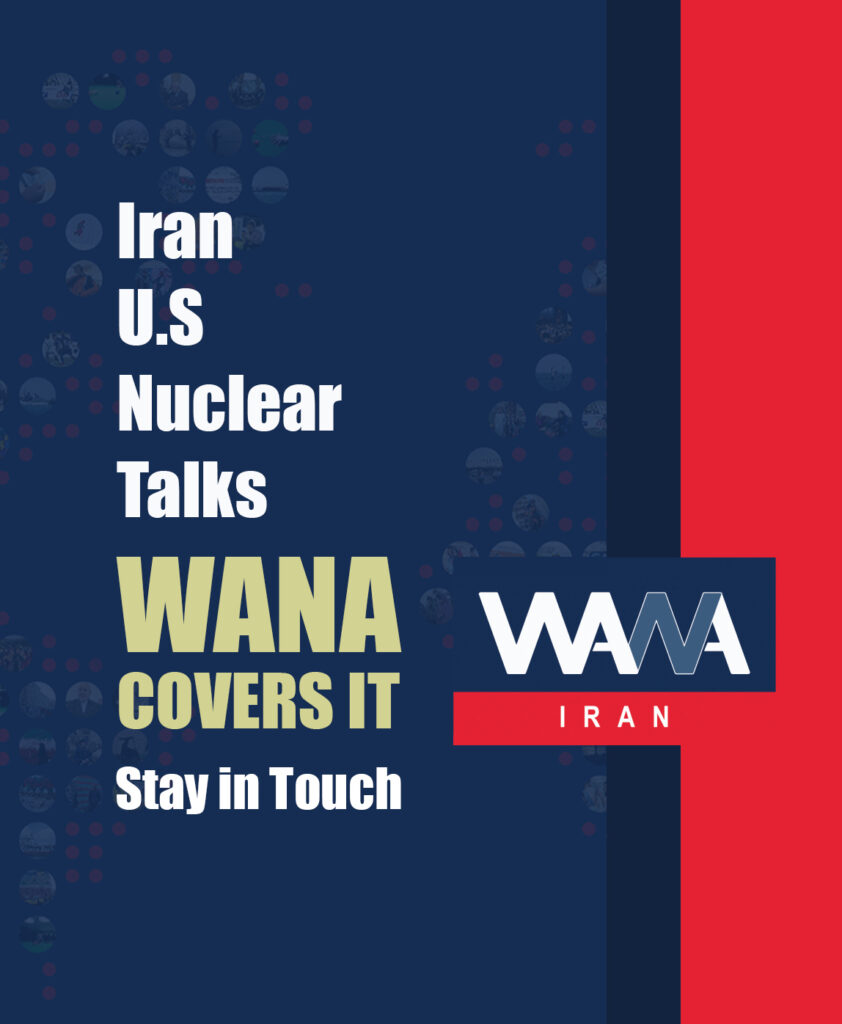Iran–US Negotiations: A Complex Chapter in International Relations
WANA (Apr 11) – Negotiations between Iran and the United States have long been a major issue in the foreign policies of both countries, as well as a significant topic in international relations. Due to deep political, ideological, and security differences, talks between the two have consistently been complex and sensitive.
Historical Background of Iran–U.S. Talks
1. Before the 1979 Islamic Revolution:
During the Pahlavi era, Iran and the U.S. maintained close ties. The U.S. regarded Iran as the “policeman of the region” in West Asia.
These relations were completely severed after the 1979 Islamic Revolution, reaching a peak of hostility during the U.S. embassy hostage crisis in Tehran.
2. Post-Revolution Era:
Following the revolution, Iran and the U.S. became political and ideological adversaries.
The U.S. supported Iraq during the Iran–Iraq War (1980–1988) and imposed heavy sanctions on Iran in the following decades.
3. Nuclear Negotiations:
One of the most important areas of Iran–U.S. dialogue has been Iran’s nuclear program.
These talks included both direct and indirect negotiations between Iran and the P5+1 group (U.S., Russia, China, France, the UK, and Germany).
The 2015 Nuclear Deal (JCPOA)
The Joint Comprehensive Plan of Action (JCPOA), signed in 2015, was one of the most significant diplomatic achievements between Iran and the U.S.
Under the deal, Iran agreed to limit its nuclear activities in exchange for the lifting of international sanctions.
The U.S., under President Barack Obama, played a central role in the agreement.
U.S. Withdrawal from the Deal (2018)
In 2018, President Donald Trump unilaterally withdrew the U.S. from the JCPOA and reimposed sweeping sanctions on Iran.
This decision triggered a deep crisis in U.S.–Iran relations, prompting Iran to gradually reduce its commitments under the deal.
Attempts to Return to the JCPOA
When Joe Biden became president in 2021, the U.S. signaled its willingness to return to the agreement.
Talks resumed in Vienna but stalled over key disagreements regarding:
The scope of sanctions relief,
Legal guarantees for Iran,
Iran’s missile program and regional military activities.
Major Challenges in Iran–U.S. Talks
1. Lack of Mutual Trust:
Historical experiences, especially the U.S. withdrawal from the JCPOA, have made Iran skeptical of American promises.
Meanwhile, the U.S. remains concerned about Iran’s missile development and regional influence.
2. Sanctions:
U.S. sanctions on Iran are among the biggest obstacles to restoring bilateral relations.
3. Domestic Pressures:
In Iran, political factions (conservatives and reformists) hold differing views on negotiations.
In the U.S., Congress and anti-Iran lobbies play a key role in opposing any agreement.
4. Regional Actors:
Regional powers like Saudi Arabia and Israel are also influential and have often opposed any U.S.–Iran agreement.
Given the tense history between Iran and the U.S., negotiations have always been fraught with challenges. Still, a return to the JCPOA—or a new agreement—could help reduce tensions and improve bilateral relations. Recent talks mediated by Oman are seen as a positive step, but reaching any meaningful outcome will require trust-building, legal assurances, reduced economic and political pressure, and avoidance of threats.
Omani FM to Mediate #Iran–#US Talks#Negotiations between the Iranian delegation, led by Seyed Abbas Araghchi, and a team sent by the U.S. government will take place in Muscat, with the Omani Foreign Minister acting as a mediator for exchanging…https://t.co/TxeSV59ax1
— WANA News Agency (@WANAIran) April 11, 2025












